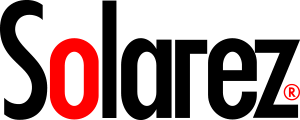No products in the cart.
LAER & BACT
The U.S. manufacturing industry has been challenged to compete with overseas manufacturing operations that have little if any environmental constraints. It is lucrative for U.S. businesses to move their operations overseas. This has resulted in an increase in goods movement as companies manufacture abroad and ship their products back into the ‘States. SCAQMD (South Coast Air Quality Management District) staff projects a 300% increase in cargo through CA ports by the year 2020. Do the math, cargo equates to inefficient use of energy, more pollution and loss of U.S. jobs
Local manufacturing with UV coatings has distinct advantages from all points of view:
UV/EB materials are “100% solids” meaning that they are not formulated with solvents. These chemicals react instantaneously when exposed to UV light or to a beam of electrons. The solids do not cure by evaporative losses (of solvents to the air) as in conventional coatings systems.
A California cabinet manufacturing facility reduced emissions from its facility by 97% by converting one of its lines from solvent borne materials to UV/EB. The same facility also reduced the amount of material used because they get more mileage out of the UV/EB coatings. UV/EB technology is pollution prevention. It eliminates the need to install energy consuming afterburners, thus eliminating combustion emissions that lead to global warming. These perks facilitate keeping jobs here in the U.S., keeping them cleaner and making them more lucrative.
The past few years have seen strong growth for UV/EB Technology. It has become the technology of choice because there are no secondary air pollutants (as in with incinerators) or hazardous waste generation (as in with some waterborne formulations). In their regulations, government agencies recognize the advantages of source reduction as compared to pollution control. The fact that UV/EB Technology has been written into various air regulations attests to the emerging importance of pollution prevention.

On the Federal Side
Lowest Achievable Emission Rate (LAER)
The Environmental Protection Agency (EPA) has made several decisions, which confirm the environmental benefits of UV materials. LAER applies to new, modified or relocated major sources nationwide. Under this program, thousands of projects must use technologies with the lowest emissions. In their federal clearinghouse, the EPA lists UV-CURE products as LAER for dozens of industrial processes, such as wood coatings and printing. The LAER designation means that UV/EB has been “achieved-in-practice” and is a viable method to achieve the lowest emission levels.
The EPA Report to the U.S. Senate
After conducting studies on UV/EB processes, past EPA administrator Carol Browner testified to a Senate committee on the environment. “Ultraviolet light-cured coatings…not only reduced emissions to the EPA-required levels, but essentially eliminated emissions altogether.” Ms. Browner pointed out that UV/EB processes were a viable solution to air quality problems.
Title V Federal Operating Permit Program
UV technology was officially incorporated into the South Coast Air Quality Management District’s (SCAQMD) Title V program. SCAQMD adopted a new rule, which exempts companies [utilizing UV Cure technology] from having to obtain a facility permit under the Title V program. Given the added monitoring, recordkeeping and public noticing requirements under the Title V program, the exemption provides current and potential users of UV with a significant regulatory benefit.
On the Local Side
SCAQMD
SCAQMD determined that UV/EB materials “generate zero or very low VOC emissions.”
Best Available Control Technology (BACT)
BACT is the local equivalent to federal LAER. Under the SCAQMD guidelines, UV/EB materials are considered “superclean” because of their low VOC content relative to conventional solvent based materials. They have been listed as “achieved in practice” in the SCAQMD Clearinghouse for major sources in the categories of printing (litho, screen, flexo) and coating operations (flow coating, dip coater, roller coater and spray booth).

“Solarez Encourages the Surfing Community to make a Stronger Environmental Commitment”
Less Recordkeeping (LAER)
At one point, daily records were required even for low VOC substances such as UV/EB. The SCAQMD now allows monthly rather than daily recordkeeping for UV materials based on their negligible emissions.
Adhesives Rule
UV materials are also exempt under the SCAQMD Adhesives Rule (Rule 1168). The exemption means that users of UV/EB are not subject to any VOC limits specified in the rule. In their staff report, the District devoted a section to discuss UV/EB technology. Staff reported that UV/EB adhesives “provide strong, durable bonds to metals, ceramics, many plastics and most rubbers, as well as a resistance to temperature swings and chemical exposure.”
Large Coatings and Solvent Rule
A recent rule by the SCAQMD once more recognized UV/EB as an environmentally friendly alternative. The District adopted Rule 1132 to reduce VOCs from large coating and solvent facilities. The rule requires that the affected industries (aerospace,metal and plastics, FRP and wood products) reduce their emissions by 65%. In an effort to encourage pollution prevention and at the same time offer companies added compliance flexibility; the rule allows reformulation to low VOC processes such as UV/EB technology. Under this rule, UV/EB materials are considered equivalent to add-on control devices. Furthermore, companies that have already converted to UV/EB would be automatically in compliance with the rule.
UV/EB NOW STATEWIDE BACT IN CA
UV/EB technology has been listed as Best Available Control Technology by the California Air Resources Board (CARB). As a member of the South Coast Air Quality Management District (SCAQMD), RadTech received briefings about a BACT Clearinghouse for the entire state based on the most advanced pollution reduction technologies. The agency has just launched a Best Available Control Technology Clearinghouse as part of the effort to implement AB 617– a new state law. This paves the way to further compliance by UV-Cure resin users and is certainly indicative of a cleaner technology for the New Millennium.

